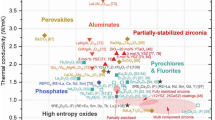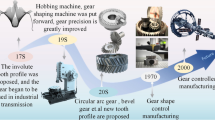Conclusions
-
1.
The considerable technical and economic advantages of surface hardening after high-frequency heating, giving better service performance, labor savings during manufacture, lower heat treating cost and also offering the possibility of complex automation of the production cycle, may be used to fullest extent only if for the components in question a steel is selected whose composition and properties are attuned to the specific features of high-speed induction heating and the kinetics of surface hardening in general.
-
2.
The development of special steels for surface hardening permits uniformity in the quality of the hardened case and suppresses ferrite banding; it also improves the wear resistance and contact strength of the components.
-
3.
Rejects because of quench cracking can be eliminated entirely without the use of soft quenching media which would impair the hardness and service performance of the hardened steel.
-
4.
New steels with reduced hardenability enable wide-spread application of progressive methods of surface hardening to gears and other components having variously shaped zones which must be strengthened.
Similar content being viewed by others
References
T. N. Nazarova,Vestnik Mashin., vol. 31, 1951, No. 9.
A. M. Tarasov,Avtomob. i Trakt. Prom., 1950, No. 10.
K. Z. Shepelyakovskii, High-Frequency Surface Hardening of Steel in Machine Building,Trudrezervizdat, 1955
K. Z. Shepelyakovskii and S. E. Ryskin, Application Technique of Induction Heating [Book], Mashgiz, 1949.
I. V. Kudryavtsev, Internal Stresses as a Strength Reserve in Machine Design, [Book] Mashgiz, 1951.
I. N. Kidin, Heat Treatment of Steel by Induction Heating, [Book]Metallurgizdat, 1950.
Yu. M. Bogatyrev and V. P. Pleshachkova, Quenching Media in Electric Hardening of Steel, ITEN Press 1955, No. K55-110.
P. S. Nikolaev and E. F. Mikhnenko,Vestnik Mashin., vol. 32, 1952, No. 1, pp. 39–42.
W. Brunst, “Die induktive Wrmebehandlung”, [Book, in German], Springer-Verlag, 1957.
G. F. Comstock, “Titanium in Iron and Steel” (Russ. Transi.) Foreign Literature Press, 1956.
J. Kubasta,Kachestvennaya Stal', vol. 1, 1933, No. 4.
S. M. Baranov, Coll. of Papers on “Problems in Constructional Steel”, Mashgiz, 1949.
K. Z. Shepelyakovskii,Avtomob. i Trakt. Prom., 1956, No. 3, [American Machinist, vol. 102, 1958, No. 3, pp 118–21].
K. Z. Shepelyakovskii and R. I. Entin,Vestnik Mashin., vol. 38, 1958, No. 12, pp. 53–58.
A. L. Nemchinskii, Collection of papers entitled “Metal Science”, (Metallovedenie), Sudpromgiz, 1957.
E. I. Malinkina, Formation of Cracks in the Heat Treatment of Steel, [Book, in Russian], Mashgiz Press, 1958.
V. N. Bogdanov et al.,Avtomobiln. i Trakt. Promysh., 1956, No. 5.
P. A. Hassels,Metal Progress, vol. 66, 1954, No. 1, pp. 94–6.
H. Voss,Stahl und Eisen, vol. 71, 1951, No. 20, pp. 1037–40.
Author information
Authors and Affiliations
Rights and permissions
About this article
Cite this article
Shepelyakovskii, K.Z. Steels for surface hardening. Met Sci Heat Treat 1, 27–36 (1959). https://doi.org/10.1007/BF00814277
Issue Date:
DOI: https://doi.org/10.1007/BF00814277




